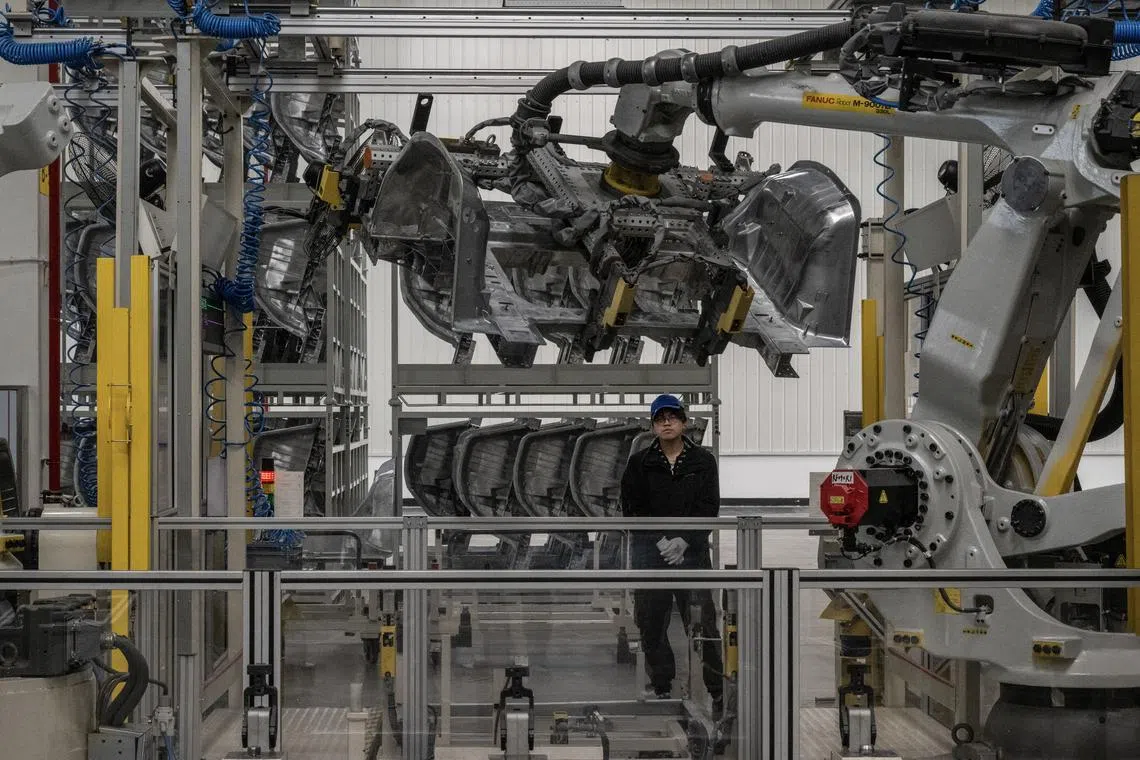China exports grow by 7.6% in May, but looming US, EU tariffs cast a pall
Sign up now: Get ST's newsletters delivered to your inbox

Exports are expected to be a growth engine for China this year, which has set a GDP target of 5 per cent.
PHOTO: NYTIMES
Follow topic:
BEIJING – China sold more of its goods such as cars, semiconductors and household appliances to the world in May, ahead of impending tariffs that could temper hopes for outbound trade to power its economy.
China’s exports grew 7.6 per cent year on year to US$302.35 million (S$408.5 million), according to customs data released on June 7.
This surpassed economists’ median forecasts of 6 per cent in a Reuters poll, and vastly improved on April’s 1.5 per cent growth, as well as May 2023’s performance, which saw a 7.5 per cent year-on-year contraction.
Exports are expected to be a growth engine in 2024 for China, which has set a gross domestic product target of 5 per cent.
May’s strong showing notwithstanding, headwinds are likely with stiffer tariffs on the horizon for a range of Chinese exports, said ING Bank chief China economist Lynn Song.
Acting against a proliferation of low-cost Chinese goods said to be disadvantaging their manufacturers, the US will hike tariffs on Chinese exports including electric vehicles (EVs), lithium-ion batteries, steel and aluminium from August, while the European Union will soon announce the results of a probe that could raise levies on Chinese EVs.
Amid depressed domestic consumption, “China is betting big time on exporting its way (to economic recovery) – and it’s working out so far, but we’re starting to see the cracks”, said Dr Alicia Garcia-Herrero, chief Asia-Pacific economist at investment bank Natixis, referring to the tariff hikes.
The May surge could be a result of buyers “front-loading imports into the US”, she told The Straits Times.
Exports to the US, China’s third-largest trading partner after Asean and the EU, grew 3.6 per cent year on year in May, after two consecutive months of declines.
Meanwhile, exports to Asean nations grew 22.5 per cent in value, the highest growth rate in over a year, up from a low base where exports to the bloc shrank 15.9 per cent in May 2023.
“Trade with Asean has been boosted by the diversification of supply chains (into the region) as tensions with the US and EU are expected to intensify,” said UOB economist Ho Woei Chen.
China’s export rebound in May came amid a global upturn in sales of electronics.
Dr Wang Tao, chief China economist at UBS, pointed to the strong performance of electronics and other tech products – key exports for the country – as reflective of an upswing in global demand for tech products, and China’s importance in this supply chain.
Mechanical and electrical products made up more than half of China’s exports in May. Of these, vehicles, integrated circuits, household appliances and ships saw double-digit growth in the first five months of 2024. China’s export of home appliances from January to May in 2024 rose 24.6 per cent by volume, but 14 per cent by value.
Similarly, its automobile exports rose 26.8 per cent by volume, but only 20.1 per cent by value. “There is increased price competition in the auto sector, and it is translating to lower export prices,” said ING’s Mr Song.
Analysts whom ST spoke with were divided on the impact that these tariffs might have on trade, and thereby growth.
DBS economist Samuel Tse said the impact would be manageable in the near term, with the Chinese goods subject to the new US tariffs making up just 4.2 per cent of China’s overall exports to the US, or 1 per cent of China’s total exports.
But taking into account the EU’s potential EV tariffs, ING’s Mr Song was more circumspect. “We remain cautious about the trade outlook for the second half of the year, and expect its contribution to growth to decline,” he said.
Meanwhile, the latest customs data showed that China’s imports inched up by just 1.8 per cent from a year earlier – a far cry from the 8.4 per cent growth logged in April.
“Property developers are holding back new developments amid high inventories, thereby adding downward pressure to commodity imports such as iron ore and copper,” said DBS’ Mr Tse.

